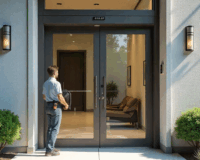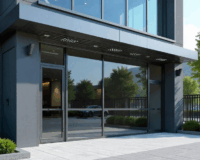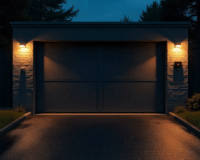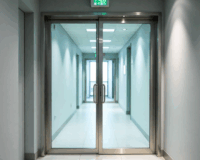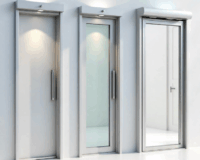Automatic swing doors have become an essential part of modern buildings, from hospitals and airports to retail stores, hotels, government offices, educational institutions, and public-access environments. Their purpose is simple yet powerful: to provide smooth, hands-free, safe, and reliable access for everyone, including individuals with mobility challenges or high traffic flow needs. At the center of every automatic swing door system lies the Automatic Swing Door Opener, a sophisticated mechanism that manages the door’s movement, safety responses, and user interaction.
Just like any mechanical and electronic device, an automatic swing door can experience issues over time due to environmental factors, wear and tear, electrical fluctuations, improper installation, or lack of routine maintenance. When the system begins to malfunction—whether the door won’t open, closes too quickly, hesitates midway, or keeps getting stuck—it can disrupt operations, create safety hazards, and reduce the overall user experience.
This comprehensive guide covers everything you need to know about troubleshooting an Automatic Swing Door Opener, from identifying symptoms and diagnosing problems to preventing future issues and understanding when professional support is necessary. It is written to support facility managers, building technicians, business owners, and anyone responsible for maintaining commercial entrances.
Understanding How an Automatic Swing Door Opener Works
Before troubleshooting, it is important to understand how an automatic swing door operates. The opener is more than just a motor; it is an interconnected system of electrical, mechanical, and sensor-driven components working together in real time.
The heart of the system is the motor and gearbox assembly, which converts electrical energy into controlled door movement. This motor connects to an arm mechanism—either a push-arm or pull-arm design—that transfers the rotational force into opening and closing motion.
The control board acts as the “brain” of the Automatic Swing Door Opener, interpreting signals from activation sensors such as push buttons, radar detectors, wave-to-open sensors, or integrated access-control systems. Safety sensors, usually infrared or laser-based, ensure that the door will not collide with obstacles or people.
Doors also rely on hinges, pivots, brackets, and alignment hardware that must remain structurally sound and properly lubricated. The entire system runs on mains power, and many models incorporate a backup battery to keep the door operable during power outages.
Understanding how these components interact gives you a clearer foundation for diagnosing issues when the system stops working as expected.

Common Signs Your Automatic Swing Door Opener Needs Troubleshooting
Early detection is critical for preventing costly repairs and avoiding downtime. Common symptoms include the door not opening, opening too slowly, closing too quickly, getting stuck, refusing to close, opening at random times, or responding inconsistently. You may also notice unusual sounds—grinding, clicking, buzzing, or squeaking—that indicate mechanical strain or electrical irregularities.
Environmental conditions can also contribute to malfunction. Dust buildup on sensors, humidity affecting electronics, temperature changes affecting components, or physical obstructions near the door can all play a role. When these symptoms appear, they are early signals that your Automatic Swing Door Opener requires attention.
For more insights on improving efficiency and performance, explore our guide on energy savings with automatic doors.
Safety Precautions Before Troubleshooting
Working around an automatic swing door carries inherent risks because the door can move suddenly and with significant force. Always prioritize safety before performing any diagnostics. Disconnect power when inspecting wiring or mechanical components. Disable activation sensors so the door cannot trigger unexpectedly. Keep hands and tools away from moving parts, and never attempt to override safety systems. If the door is located in a high-traffic commercial space, cordon off the area to prevent accidental activation.
If the door is linked to fire systems or is part of an access-control function (such as in hospitals or aged-care facilities), follow compliance regulations before initiating any maintenance work.
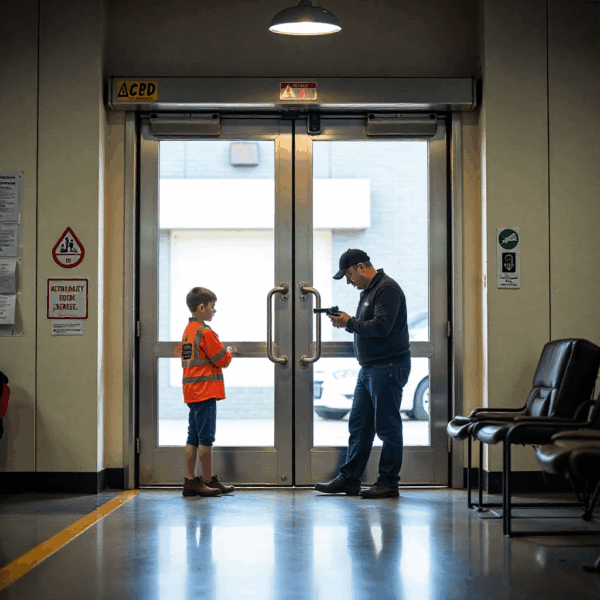
Troubleshooting When the Door Does Not Respond
A non-responsive automatic swing door is often related to electrical supply, sensor failure, or control-board malfunction. Begin by checking whether the door opener is receiving power. Confirm that circuit breakers are not tripped and verify that the emergency stop button has not been engaged. Look for loose or disconnected wiring near the power input or battery backup.
If the power supply is correct, inspect the activation devices. A motion sensor, push button, or wave-to-open switch may have failed. Dust, fingerprints, signage, or display racks can block detection zones, preventing signals from reaching the opener. For wired activation devices, check that terminals are secure. For wireless devices, ensure batteries are fresh and communication signals are unobstructed.
If activation devices are functioning, examine the control board. Many control boards have indicator lights that show system status, errors, or faults. A lack of LED signals may suggest a burned-out board, blown fuse, or internal electrical failure.
If the opener still does not respond, manual movement of the door can help isolate whether the issue is mechanical or electrical. If the door moves smoothly in manual mode, the mechanical hardware is likely sound, and the issue points toward sensors or control electronics.
Troubleshooting Slow or Weak Door Movement
When the Automatic Swing Door Opener operates slowly, hesitates at the beginning of its stroke, or feels weak, mechanical friction or misconfiguration is often the cause. First, evaluate the speed settings on the control board. Most door openers have adjustable opening speed, closing speed, and latching speed. These settings might have been altered unintentionally during previous maintenance or power resets.
Next, turn off the power and gently move the door manually. If you feel resistance, sticking, scraping, or inconsistent movement, the issue is mechanical. Hinges may be dried out or worn, the door may be sagging, or the arm mechanism might be bent or misaligned. Lubricate hinges with an appropriate silicone-based lubricant and tighten loose screws or brackets.
Weather stripping, floor mats, new carpets, or debris under the door pivot can also add resistance, causing slow operation. Removing the obstruction often resolves the issue immediately.
If the motor overheats or struggles, it may be compensating for improper door weight or alignment. In such cases, recalibration or hinge reinforcement may be required.

Troubleshooting a Door That Closes Too Fast or Slams
A door that slams is not only a safety hazard but also a sign that internal braking, speed control, or mechanical balancing has failed. Start by adjusting the closing force and braking settings on the control board. These settings regulate how gently the door closes.
A lack of lubrication in arm joints and hinges can also cause uncontrolled movements, as can damaged linkages or worn gears within the motor housing. Check for misalignment in the door leaf, frame, and hinges.
Another common cause is faulty or dirty safety sensors. If the safety system cannot detect obstacles properly, the door may revert to a default force setting, causing abrupt movements. Cleaning or realigning these sensors often resolves the problem.
Troubleshooting a Door That Opens Partially or Stops Mid-Swing
Partial openings usually mean the opener is encountering resistance or a misread safety signal. Start by checking for obstructions around the door path, such as furniture or signage. Inspect mechanical components to ensure the arm is properly mounted and not obstructed.
Manually swinging the door can reveal whether it sticks at specific points, indicating hinge or frame misalignment. If the door moves smoothly manually, the issue may lie in the motor’s torque settings or internal overload protections that trigger when excessive force is detected.
Sensor misalignment can also cause incomplete openings. Incorrectly angled radar sensors or partially blocked infrared beams can trick the system into thinking someone or something is obstructing the opening path, causing the door to stop prematurely.
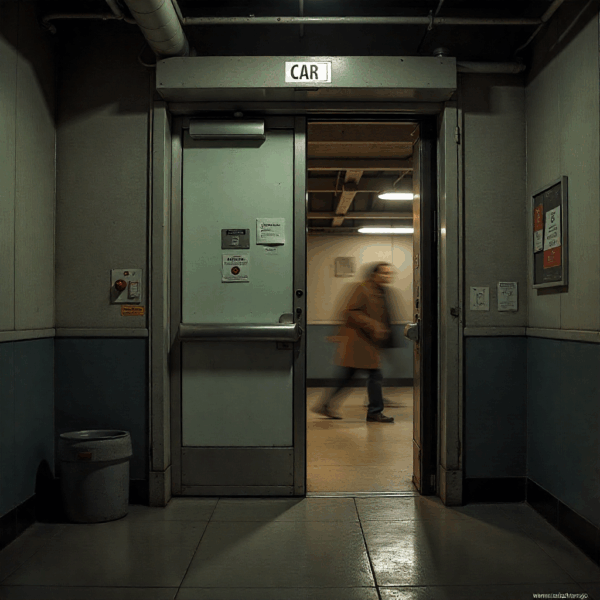
Troubleshooting a Door That Stays Open and Will Not Close
A door that remains open typically experiences sensor problems or improper system settings. Safety sensors may be detecting phantom obstacles due to reflections, glare, or misalignment. Clean the sensors, adjust angles, and remove reflective surfaces such as glass displays or polished metal near the detection area.
Check hold-open functions, which may have been accidentally activated. Scheduled hold-open modes, cleaning modes, or maintenance settings could also be engaged.
Push buttons can occasionally get stuck in the “activated” position, especially older mechanical switches or devices exposed to moisture or dust. Resetting or replacing the switch restores normal operation.
Troubleshooting Random or Unwanted Door Activations
Doors opening unexpectedly or too frequently often point to over-sensitive activation sensors. Adjust the sensitivity and detection range. Nearby moving objects such as flags, plants, strollers, or machinery can inadvertently trigger sensors.
Lighting conditions can also interfere with certain sensors. Strong sunlight or harsh LED lighting pointed directly at an infrared sensor may trigger false detections. Repositioning the sensor or installing a hood can minimize interference.

Identifying and Diagnosing Unusual Noises
Different noises indicate different types of problems. Grinding sounds often mean worn gears, dry hinges, or friction in the motor. Clicking sounds may indicate failing relays or loose arm joints. Buzzing may be electrical, often linked to the control transformer or capacitor.
Squeaking or creaking is usually mechanical, related to hinges or pivot points that need lubrication. Regardless of the noise, early intervention is crucial to prevent permanent damage.
Understanding Intermittent Operation
Intermittent performance is often one of the most difficult issues to diagnose. This type of problem may be caused by loose wiring, failing sensors, inconsistent voltage supply, overheating components, or interference with wireless activation devices.
Observe when the issue occurs. If failure happens only during peak hours, it may be due to increased traffic affecting sensors, or heat buildup inside the motor housing. If failure happens at random intervals, check wiring terminals and grounding connections.
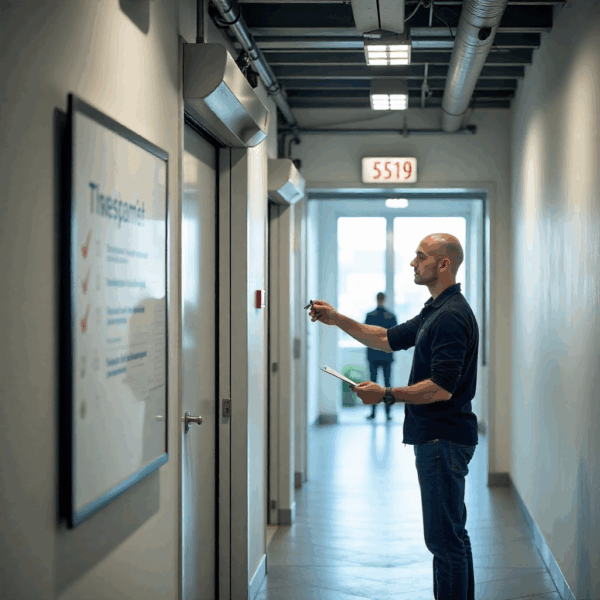
Preventive Maintenance for Long-Term Reliability
Preventive maintenance is the most effective way to ensure long-term performance for any Automatic Swing Door Opener. Monthly checks should include cleaning sensors, lubricating hinges, tightening arm mechanisms, and testing battery backups.
Quarterly maintenance should examine control board cleanliness, verify error logs, test safety sensors, and ensure the motor runs without overheating.
Annual professional servicing is essential to test torque limits, inspect bearings, replace worn mechanical parts, and confirm compliance with safety standards and accessibility regulations.
Facilities that implement regular checks drastically reduce breakdowns and extend the lifespan of their automatic door systems.
When to Call a Professional Technician
While many troubleshooting steps can be handled in-house, certain situations require expertise. Issues involving major electrical faults, wiring damage, burned circuitry, fire-system integration, constant breaker tripping, or repeated sensor failure should be handled only by certified professionals.
Doors located in medical environments, clean rooms, air-controlled rooms, or government facilities should always be serviced by qualified technicians who understand regulatory requirements.

Final Thoughts
Troubleshooting an Automatic Swing Door Opener requires a combination of mechanical observation, electrical understanding, and practical problem-solving. By familiarizing yourself with the system’s components, recognizing early warning signs, and following a structured diagnostic process, you can resolve most issues quickly and confidently.
With regular maintenance, proper sensor care, and timely professional servicing, your automatic swing door will continue to provide smooth, safe, and reliable access for years to come.
Upgrade your entrances today with high-quality Automatic Swing Door Openers designed for smooth operation and long-term reliability. Shop now and improve your building’s access


